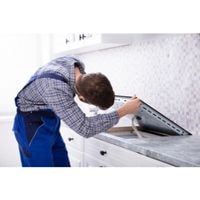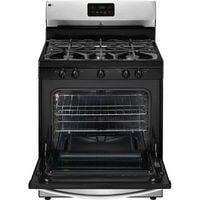Kenmore stove burner not working. As a rule, Kenmore stoves run very well. But as with any appliance, things just don’t always go smoothly.
Before calling a repairman to fix the stove, there are a couple of things that you can do yourself to troubleshoot and see if the problem is easy enough to fix on your own.
Most problems with Kenmore stoves stem from heating elements because they’re so essential when it comes to operating your stove’s burners.
It’s not difficult or expensive to test whether your heating element is working; all you need is an Ohm meter.
One way you can save money on heating element replacement is by buying parts online and installing them yourself.
Kenmore stove burner not working

Kenmore stoves are very dependable, and they are a great addition to any home kitchen.
The only issue is that things might now operate as well as you would like, mostly because of the electromechanical heating elements which can wear out with time.
If you’re experiencing issues with your stove, and you want it repaired as quickly as possible,
we recommend doing some online research first in order to determine whether these issues can be fixed by yourself so you don’t have to worry about paying for the services of an expensive repair man later on.
Defective Surface Element Switch
If it’s a gas stove, check if the gas is turned off. If the burner still doesn’t work, it could mean that the surface element switch isn’t working properly.
However, if there are elements of different sizes on your stove to experiment with, we suggest trying those first to see if one of them is actually causing the problem.
After you’ve tested all the individual surface elements, you can return to check if it was in fact a defective surface element switch in need of replacement.
Faulty Surface Element Board
The surface element consists of two primary circuits: the power circuit and the control circuit.
The power circuit contains two relays that regulate the power supply to the burners. If one or both relays fail, the surface element won’t work.
Similarly, if two burners in your cooktop or oven don’t work at all, that usually means that there’s a problem with the relays.
If only one burner isn’t working but none of the others are persistent is often needed to thoroughly diagnose this problem.
As diagnostic procedures take time, use a multimeter in order to test for continuity and see whether you have any problems with your coils.
Radiant surface element won’t work
The most common cause of when a radiant surface element won’t work is when the surface element itself needs replacing.
The replacement of the surface element can typically be done by making sure to turn off the power source.
So that it is isolated and then unscrewing or unclipping any holding points for the old surface element, unplugging or disconnecting all connections associated with it.
And then put in your new shiny new surface elements taking extra care to not let them touch each other unless you’ve bought a special
kit.
Replace the Coil Surface Element
First, make sure that the element is pushed into the socket. Second, inspect for any damage. If you spot any damage on the surface element, replace it with a new one.
Thirdly use a multimeter to test the continuity of the new surface element. If your new surface element has no continuity.
You either don’t have enough solder on any side of the joint, or the lead-in wires aren’t soldered onto the terminals inside the two solder pads properly (not likely). Go back, touch up and retest again.
Problem with Element Receptacle and Wire Kit
Plugging the surface element into the receptacle. As the receptacle receives power, it is possible for the contacts on the wires inside to be burnt or damaged. Eventually, this will cause the element to not receive power.
If you’d like to replace just the receptacle and not the element, then you need to look at the receptacle in order to detect any visible signs of burning where it is used.
Keep in mind that if you have spots where wires are leading from other places within your wall into this specific receptacle.
Then you will have no choice but to replace both parts as well since these spots could have also experienced damage from direct contact with an overheated wire elsewhere.
the Solid surface element won’t work
If the surface element won’t work and the stove has the solid surface element type of heat, this is a sign that it could be that the solid surface element has been damaged to the point of no return.
The solid surface element is similar to other typical elements like an electric stovetop where you’ll find a piece of metal inside made up of coils.
It becomes hot when electricity is applied to it, but if it finds itself getting too hot from prolonged use then over time this will change in both texture and color and will eventually result in there being permanent damage as far as durability goes.
The best way to test for this type of situation is by using a meat probe on the element or taking a good old-fashioned temperature reading with a thermometer.
Burned or loose wires
If you notice that wire has burned out near the heating element, it’s probably due to overuse.
The wires leading from the element should be carefully inspected to determine whether or not one of them is burned out.
If a wire shows visible signs of being damaged or burnt up, then it will likely need to be replaced.
Related Guides
